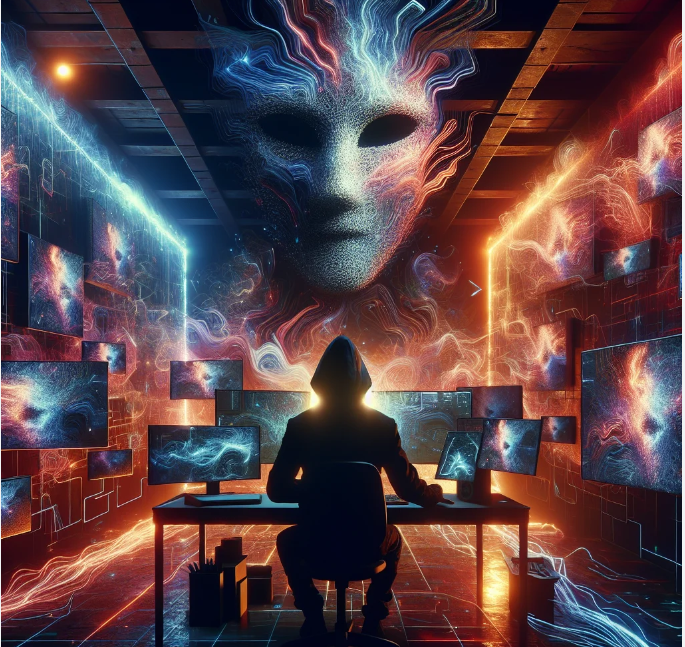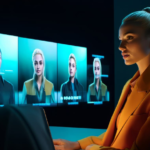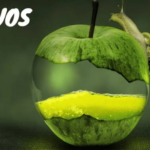In the ever-evolving world of digital art, a new trend has emerged, one that defies traditional norms while captivating audiences globally. The bl_faceless art revolution is reshaping the way we perceive art and how we interact with it on social media. This movement is all about removing the most recognizable element of human portraits—the face—and replacing it with abstraction, emotion, and symbolism. The rise of this art has opened doors to endless creative possibilities, and its impact on both the digital art scene and social media is undeniable.
What is bl_faceless Art?
At its core, this art is a style that omits or de-emphasizes facial features in portraits, instead highlighting other elements like body language, posture, or symbolic objects. Artists using this technique rely on minimalism and abstraction, allowing viewers to focus on other aspects of the artwork. Without the distraction of a face, the audience is encouraged to interpret the message or emotion conveyed in a more personal way.
This genre also provides a broader sense of inclusivity. By eliminating facial details, faceless art becomes universally relatable, inviting the audience to place themselves within the image, transcending race, gender, and culture.
The Influence of bl_faceless Art on Digital Media
The popularity of faceless art has exploded across digital platforms. Artists worldwide are experimenting with this unique approach, and social media platforms are the perfect space for sharing their work. Sites like Instagram, TikTok, and Pinterest are filled with faceless portraits, reflecting the shift from traditional art forms to a modern, minimalistic aesthetic.
Digital media has amplified the reach of this art form, offering artists a direct line to audiences without the need for galleries or physical exhibitions. The digital world allows these artists to showcase their creations to a global audience, inviting engagement and discussion on a scale never before possible. As a result, the bl_faceless art movement continues to grow, with artists and art enthusiasts alike embracing its simple yet powerful approach.
Why is bl_faceless Art So Appealing?
The appeal of this art lies in its ability to spark curiosity and imagination. Without a face to define the subject, viewers are encouraged to interpret the work based on their own emotions and experiences. This makes the art more interactive, as every viewer can have a different take on what the artwork is trying to convey.
Another reason for its growing popularity is its adaptability. The faceless format can be applied across various styles—be it surrealism, minimalism, or even pop art. Artists have the freedom to experiment with colors, shapes, and compositions that draw attention away from the face, allowing other elements to take center stage.
Additionally, the rise of social media has fueled the growth of this art style. Faceless portraits are often used as profile pictures, wallpapers, or digital art prints. Their minimalist aesthetic makes them highly shareable, creating a cycle of exposure that further spreads the bl_faceless movement.
bl_faceless Art and Social Media: A Perfect Match
Social media has played a pivotal role in the spread of this art revolution. With platforms like Instagram and Pinterest, where visuals dominate, this art form is thriving. Faceless art fits seamlessly into the current social media culture, which values visually striking, shareable content.
On Instagram, hashtags like facelessart and digitalart have gained thousands of followers. Artists and influencers alike are drawn to the unique visual appeal of faceless art, using it as a way to make a statement without saying a word. The use of bold colors, abstract shapes, and minimalistic designs make these artworks stand out in the fast-scrolling world of social media.
Moreover, social media algorithms often favor content that sparks engagement. The curiosity and open-ended nature of this art naturally invite viewers to like, comment, and share. This increased interaction helps push these artworks into the limelight, further fueling the movement.
The Role of Identity in bl_faceless Art
A significant aspect of this art movement is its focus on identity—or rather, the lack of a specific identity. By removing facial features, the artwork becomes a blank slate, open to interpretation. The absence of a face invites the viewer to see themselves in the art, making it more personal and relatable.
This lack of identity also challenges the traditional notion of portraiture. In conventional portraits, the face is often the focal point, representing the subject’s identity and character. bl_faceless art, however, shifts the focus away from individual identity and towards broader themes like emotion, human connection, or even societal commentary.
The Future of bl_faceless Art in Digital Spaces
As digital art continues to evolve, this art movement is expected to grow even more prominent. With more artists adopting this style, we can anticipate new interpretations and innovations in how faceless art is created and shared. Social media will undoubtedly remain a key driver in the dissemination of this art form, offering a platform for artists to reach larger audiences.
The rise of non-fungible tokens (NFTs) may also play a role in the future of faceless art. As the world of digital art becomes more intertwined with cryptocurrency and NFTs, faceless portraits could become even more valuable, both financially and culturally.
Conclusion
The bl_faceless art revolution is much more than just a trend; it’s a profound shift in the way we create and interact with art in the digital age. By removing facial features, this art form allows for a deeper exploration of emotion, identity, and symbolism, offering viewers a chance to engage with the artwork on a more personal level.
As social media continues to evolve, so too will this art movement. With its minimalist aesthetic and universal appeal, this style is perfectly suited to the digital era. Artists are pushing boundaries, creating powerful visual statements without relying on traditional portraiture. In doing so, they are transforming the world of digital and social media art—one faceless portrait at a time.
FAQs
1. What makes this faceless art different from traditional portrait art?
Traditional portraits focus on facial features to convey identity and emotion, while this art removes these details, focusing on other elements like body language or symbolic objects, allowing for a more abstract and personal interpretation.
2. Why is bl_faceless art so popular on social media?
Faceless art’s minimalist and visually striking style makes it highly shareable on platforms like Instagram and Pinterest. It also encourages engagement, as viewers interpret the meaning in their own way.
3. Can anyone create this art?
Yes, anyone with a creative mind can try their hand at this art. Digital tools like Procreate and Adobe Illustrator make it easier for artists of all skill levels to experiment with this style.
4. Is bl_faceless art only for digital artists?
While this art is thriving in digital spaces, traditional artists can also explore this style using paints, pencils, or other mediums. The key is to emphasize abstraction and remove facial details.
5. How can I start creating my own this art?
Begin by focusing on elements other than the face—like posture, clothing, or background elements. Experiment with colors, shapes, and styles that evoke emotion or tell a story without relying on facial features.







